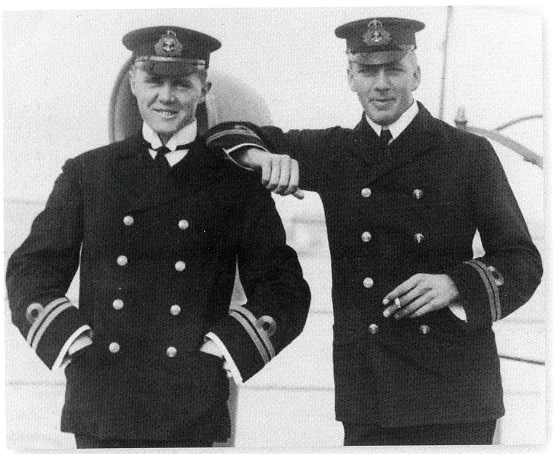|
Janet Okell
Janet Hay Okell (30 August 1922, Neston – February 2005, Brimstage) was an English wargamer who joined the Western Approaches Tactical Unit (WATU) as a young Naval rating in the Women's Royal Naval Service. Shortly after Admiral Max Horton was appointed Commander-in-Chief of the Western Approaches Command, in November 1942, he visited WATU, and played one of their wargames. As one of the Royal Navy's most experienced submarine commanders he opted to play the role of a U-boat commander. Captain Gilbert Roberts, head of WATU decided that Okell should play the role of the escort group commander. Horton was somewhat dismayed to find that Okell was able to outsmart him five times out of five. Despite his initial horror on discovering he had been beaten by a twenty year old female rating, he soon sanctioned the use of her method, known as '' Beta Search'' to be included in the next revision of Fleet Orders Fleet Orders were printed routine orders which were issued by the Admira ... [...More Info...] [...Related Items...] OR: [Wikipedia] [Google] [Baidu] |
Neston
Neston is a town and civil parish on the Wirral Peninsula, in Cheshire, England. It is part of the unitary authority of Cheshire West and Chester. The village of Parkgate is located to the north west and the villages of Little Neston and Ness are to the south of Neston. At the 2001 census the population of Neston ward was recorded as 3,521, increasing to 4,329 at the 2011 census. The civil parish also includes Little Neston, Parkgate, Willaston and part of Burton and Ness, and had a population of 15,162 in 2001, increasing to 15,221 in 2011. History The name is of Viking origin, deriving from the Old Norse ''Nes-tún'', meaning 'farmstead or settlement at/near a promontory or headland'. Another Nesttun town can be found near Bergen, Norway. It is also mentioned in the Domesday Book as ''Nestone'' under the ownership of a William Fitznigel, with a population of eight households. Civic history A royal charter was granted to Neston in 1728 in support of its status as a ... [...More Info...] [...Related Items...] OR: [Wikipedia] [Google] [Baidu] |
Brimstage
Brimstage () is a village in the centremost part of the Wirral Peninsula, Merseyside, England. It is approximately east of Heswall and south west of Bebington. Administratively, it is within the Clatterbridge Ward of the Metropolitan Borough of Wirral and is in the parliamentary constituency of Wirral South. At the time of the 2001 census, Brimstage had a population of 100. History The name Brimstage likely means "Bruna's place or riverbank"; the Old English word ''stæð'' meaning a river-bank, shore or landing place. Over time, the name has been spelt as ''Brunestathe'' (1260), ''Brimstache'' (1275), ''Brunstach'' (1326), ''Bronstathe'' (1348) and ''Brynstat'' (1387). In 1288, Sir Roger de Domville is said to have 'listened for the word ''Brunstath (an old name for Brimstage, which he held as lord) during proceedings at Chester. The Domvilles were a Cheshire family of some standing, owning land in Oxton, as well as Brimstage. The Domville family left the village when th ... [...More Info...] [...Related Items...] OR: [Wikipedia] [Google] [Baidu] |
English People
The English people are an ethnic group and nation native to England, who speak the English language in England, English language, a West Germanic languages, West Germanic language, and share a common history and culture. The English identity is of History of Anglo-Saxon England, Anglo-Saxon origin, when they were known in Old English as the ('race or tribe of the Angles'). Their ethnonym is derived from the Angles, one of the Germanic peoples who migrated to Great Britain around the 5th century AD. The English largely descend from two main historical population groups the West Germanic tribes (the Angles, Saxons, Jutes and Frisians) who settled in southern Britain following the withdrawal of the Ancient Rome, Romans, and the Romano-British culture, partially Romanised Celtic Britons already living there.Martiniano, R., Caffell, A., Holst, M. et al. Genomic signals of migration and continuity in Britain before the Anglo-Saxons. Nat Commun 7, 10326 (2016). https://doi.org/10 ... [...More Info...] [...Related Items...] OR: [Wikipedia] [Google] [Baidu] |
Wargame
A wargame is a strategy game in which two or more players command opposing armed forces in a realistic simulation of an armed conflict. Wargaming may be played for recreation, to train military officers in the art of strategic thinking, or to study the nature of potential conflicts. Many wargames recreate specific historic battles, and can cover either whole wars, or any campaigns, battles, or lower-level engagements within them. Many simulate land combat, but there are wargames for naval and air combat as well. Generally, activities where the participants actually perform mock combat actions (e.g. friendly warships firing dummy rounds at each other) are not considered wargames. Some writers may refer to a military's field training exercises as "live wargames", but certain institutions such as the US Navy do not accept this.''War Gamer's Handbook'' (US Naval War College), p. 4: "The .S. Naval War College's War Gaming Departmentuses the Perla (1990) definition, which describes w ... [...More Info...] [...Related Items...] OR: [Wikipedia] [Google] [Baidu] |
Western Approaches Tactical Unit
The Western Approaches Tactical Unit (WATU) was a unit of the British Royal Navy created in January 1942 to develop and disseminate new tactics to counter German submarine attacks on trans-Atlantic shipping convoys. It was led by Captain Gilbert Roberts and was principally staffed by officers and ratings from the Women's Royal Naval Service (Wrens). Their primary tool for studying U-boat attacks and developing countermeasures was wargames. After the U-boat threat to merchant shipping was defeated, WATU continued to develop anti-submarine tactics for later stages of the war, including Operation Overlord and the Pacific War. WATU trained naval officers in its tactics by hosting week-long training courses in which the students played wargames. WATU formally ceased operations at the end of July 1945. Mission During World War I, German submarines (U-boats) sank merchant ships in the Atlantic Ocean so as to deny supplies to Germany's enemies in Europe. Britain reacted by organizing the m ... [...More Info...] [...Related Items...] OR: [Wikipedia] [Google] [Baidu] |
Women's Royal Naval Service
The Women's Royal Naval Service (WRNS; popularly and officially known as the Wrens) was the women's branch of the United Kingdom's Royal Navy. First formed in 1917 for the First World War, it was disbanded in 1919, then revived in 1939 at the beginning of the Second World War, remaining active until integrated into the Royal Navy in 1993. WRNS included cooks, clerks, wireless telegraphists, radar plotters, weapons analysts, range assessors, electricians and air mechanics. History First World War The Wrens were formed in 1917 during the First World War. On 10 October 1918, nineteen-year-old Josephine Carr from Cork became the first Wren to die on active service, when her ship, the RMS ''Leinster'' was torpedoed. By the end of the war the WRNS had 5,500 members, 500 of them officers. In addition, about 2,000 members of the WRAF had previously served with the WRNS supporting the Royal Naval Air Service and were transferred on the creation of the Royal Air Force. It was disb ... [...More Info...] [...Related Items...] OR: [Wikipedia] [Google] [Baidu] |
Max Horton
Admiral Sir Max Kennedy Horton, (29 November 1883 – 30 July 1951) was a British submariner during the First World War and commander-in-chief of the Western Approaches in the later half of the Second World War, responsible for British participation in the Battle of the Atlantic. Early life Max Horton was born in Anglesey to Robert Joseph Angel Horton and Esther/Hester Maude Goldsmid, of the famous Goldsmid/D'Avigdor Goldsmid Anglo-Jewish family. Horton joined the Royal Navy officer training ship, HMS ''Britannia'' on 15 September 1898. Whilst on , he was involved in the rescue efforts when ran aground off Cape Spartel and was subsequently awarded the Board of Trade Medal for Saving Life at Sea in silver. First World War The outbreak of war saw Lieutenant-Commander Horton in command of one of the first British ocean-going submarines, the 800-ton . At dawn on 13 September 1914, he torpedoed the German light cruiser six miles southwest of Heligoland. ''Hela'' was hit amidshi ... [...More Info...] [...Related Items...] OR: [Wikipedia] [Google] [Baidu] |
Western Approaches Command
Commander-in-Chief, Western Approaches was the commander of a major operational command of the Royal Navy during World War II. The admiral commanding, and his forces, sometimes informally known as 'Western Approaches Command,' were responsible for the safety of British shipping in the Western Approaches. History Admiral Martin Dunbar-Nasmith, who had been Commander-in-Chief, Plymouth, also took over responsibility for the Western Approaches from the start of World War II. After the fall of France in June 1940, the main North Atlantic convoy routes were diverted around the north of Ireland through the north-western approaches.History of Derby House (Western Approaches Museum) accessed 1 May 2017 By late 1940, the location of the Combined Operations headquarters at Plymouth was increasingly awkwar ... [...More Info...] [...Related Items...] OR: [Wikipedia] [Google] [Baidu] |
Gilbert Roberts (Royal Navy Officer)
Gilbert Howland Roberts CBE (11 Oct 1900 – 22 Jan 1986) was an officer in the Royal Navy. From 1942 to 1945, Captain Roberts operated a naval wargaming unit based in Liverpool called the Western Approaches Tactical Unit (WATU). This unit developed anti-submarine tactics to defend trans-Atlantic merchant convoys from German submarines. Early life Gilbert Roberts was the second son of Sir Howland Roberts, 12th Baron Glassenbury of Kent and 5th Baronet of Britfieldstown in Cork. Military career Roberts joined the Royal Navy as a cadet in September 1913, a month shy of his thirteenth birthday. His first posting was ''HMS Hibernia''. From 1935 to 1937, Roberts studied at the Portsmouth Tactical School. There, he discovered naval wargaming, and became an enthusiastic practitioner. Like many wargaming enthusiasts of his time, he developed his own rules, based mainly on the wargames of Fred T. Jane. Roberts was given command of the destroyer HMS ''Fearless'' in autumn 1937. In De ... [...More Info...] [...Related Items...] OR: [Wikipedia] [Google] [Baidu] |
Fleet Orders
Fleet Orders were printed routine orders which were issued by the Admiralty to ships of the Royal Navy The Royal Navy (RN) is the United Kingdom's naval warfare force. Although warships were used by English and Scottish kings from the early medieval period, the first major maritime engagements were fought in the Hundred Years' War against F ... from 1909 to 1964. References Royal Navy {{UK-navy-stub ... [...More Info...] [...Related Items...] OR: [Wikipedia] [Google] [Baidu] |





